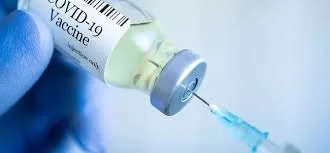
Yesterday, the FDA has given its authorization for the latest COVID-19 vaccine, marking the first one not designed specifically for the original or “ancestral” strain of the virus.
In the previous year, the FDA approved a bivalent vaccine designed to combat both the old and the new variants. This time, the focus is on a “monovalent” vaccine, targeting a single strain with the primary objective of reducing health risks, hospitalizations, and fatalities linked to newer variants such as the XBB.1.5 Omicron subvariant. It is also anticipated to offer some level of protection against related variants currently in circulation.
This emergency authorization from the FDA encompasses vaccines produced by both Pfizer and Moderna.
However, two steps are yet to be taken before you can receive the booster at your doctor’s office or local pharmacy. The CDC’s Advisory Committee on Immunization Practices (ACIP) is anticipated to vote on the approval of this new vaccine this week. Following that, the new CDC director, Dr. Mandy Cohen, will need to give her approval.
The FDA has stated that the vaccine is authorized for individuals aged 5 and above, regardless of their prior vaccination status, provided it has been more than 2 months since their last COVID shot.
For children aged 6 months to 4 years who have previously received at least one COVID vaccine, they are eligible for one or two doses of the new vaccine. The appropriate dosage should be confirmed with your pediatrician.
Children in the same age group who have never received a COVID vaccine are eligible for either three doses of the new Pfizer vaccine or two doses of the new Moderna formula.
“The FDA is confident in the safety and effectiveness of these updated vaccines, and the agency’s benefit-risk assessment shows that the benefits of these vaccines for individuals 6 months of age and older outweigh any potential risks,” the agency stated.
The number of individuals who received the previous booster fell short of expectations. In most areas across the United States, less than 20% of the population received the updated bivalent vaccine since its approval on September 1, 2022. Only in seven states and the District of Columbia does the percentage exceed 25%, according to a CDC map.
A significant uncertainty lies in how the cost of these new boosters, no longer provided free of charge, might impact their adoption. Manufacturers estimate that without health insurance, they will range from $110 to $130 per dose.












